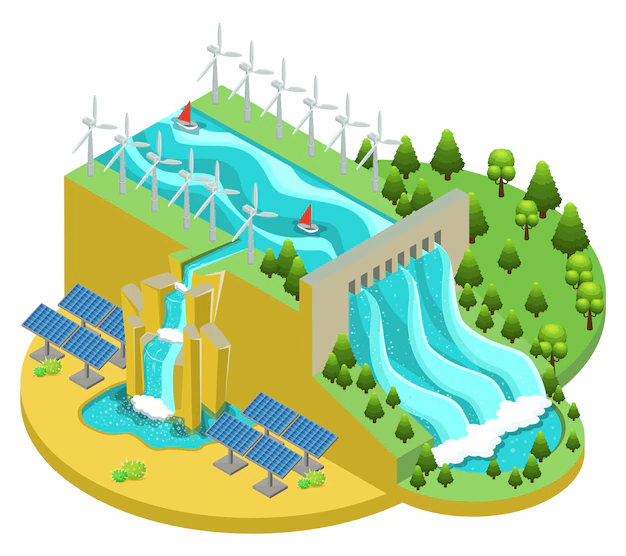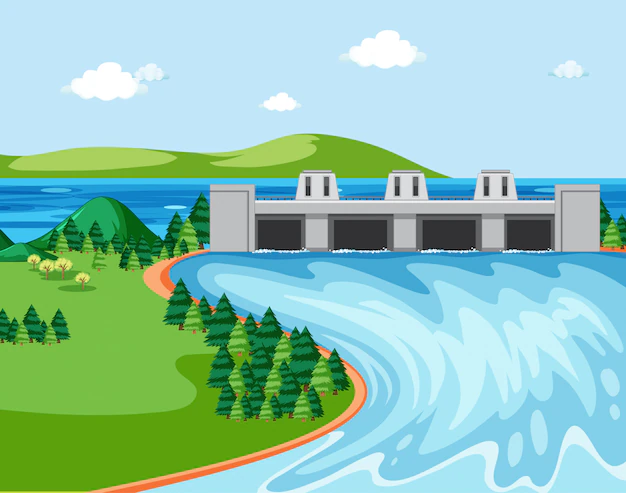Hydro Electricity
Hydroelectric energy, also called hydroelectric power or hydroelectricity, is a form of energy that harnesses the power of water in motion—such as water flowing over a waterfall—to generate electricity. People have used this force for millennia. Over two thousand years ago, people in Greece used flowing water to turn the wheel of their mill to ground wheat into flour.
How Does Hydroelectric Energy Work?
Most hydroelectric power plants have a reservoir of water, a gate or valve to control how much water flows out of the reservoir, and an outlet or place where the water ends up after flowing downward. Water gains potential energy just before it spills over the top of a dam or flows down a hill. The potential energy is converted into kinetic energy as water flows downhill. The water can be used to turn the blades of a turbine to generate electricity, which is distributed to the power plant’s customers.


Types of Hydroelectric Energy Plants
There are three different types of hydroelectric energy plants, the most common being an impoundment facility. In an impoundment facility, a dam is used to control the flow of water stored in a pool or reservoir. When more energy is needed, water is released from the dam. Once water is released, gravity takes over and the water flows downward through a turbine. As the blades of the turbine spin, they power a generator.
Another type of hydroelectric energy plant is a diversion facility. This type of plant is unique because it does not use a dam. Instead, it uses a series of canals to channel flowing river water toward the generator-powering turbines.
The third type of plant is called a pumped-storage facility. This plant collects the energy produced from solar, wind, and nuclear power and stores it for future use. The plant stores energy by pumping water uphill from a pool at a lower elevation to a reservoir located at a higher elevation. When there is high demand for electricity, water located in the higher pool is released. As this water flows back down to the lower reservoir, it turns a turbine to generate more electricity.
How Widely Is Hydroelectric Energy Used Around the World?
Hydroelectric energy is the most commonly-used renewable source of electricity. China is the largest producer of hydroelectricity. Other top producers of hydropower around the world include the United States, Brazil, Canada, India, and Russia. Approximately 71 percent of all of the renewable electricity generated on Earth is from hydropower.
What Is the Largest Hydroelectric Power Plant in the World?
The Three Gorges Dam in China, which holds back the Yangtze River, is the largest hydroelectric dam in the world, in terms of electricity production. The dam is 2,335 meters (7,660 feet) long and 185 meters (607 feet) tall, and has enough generators to produce 22,500 megawatts of power.
